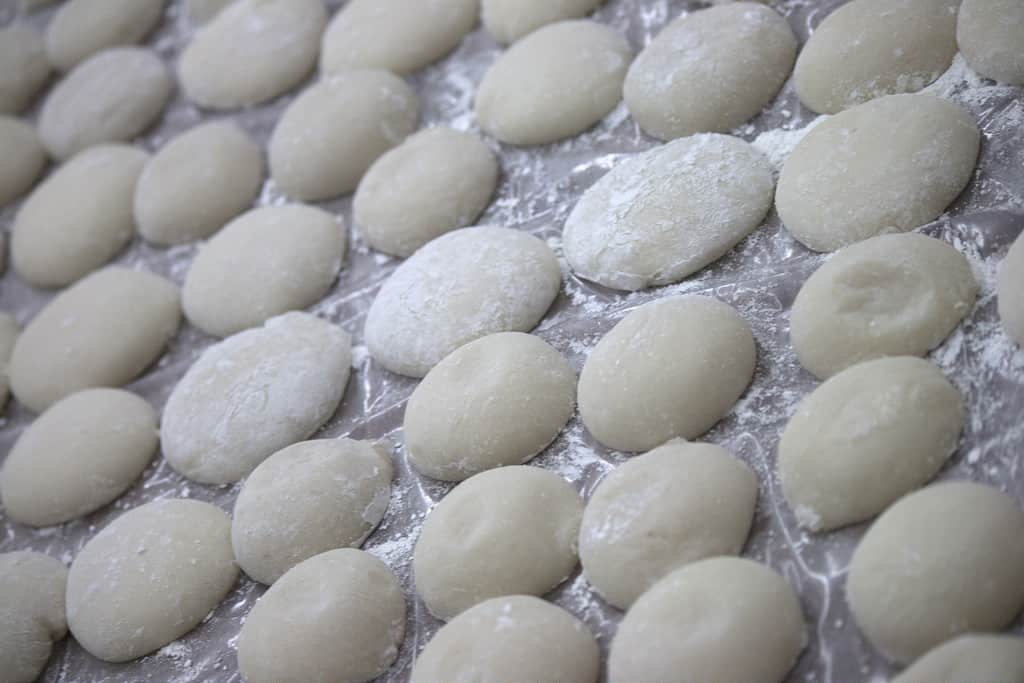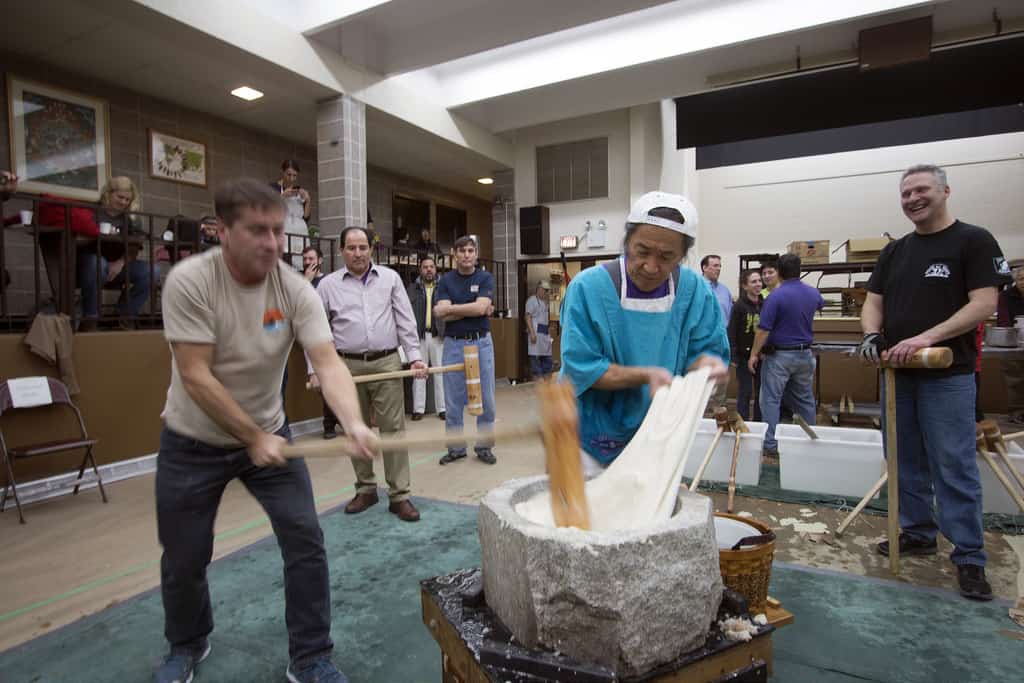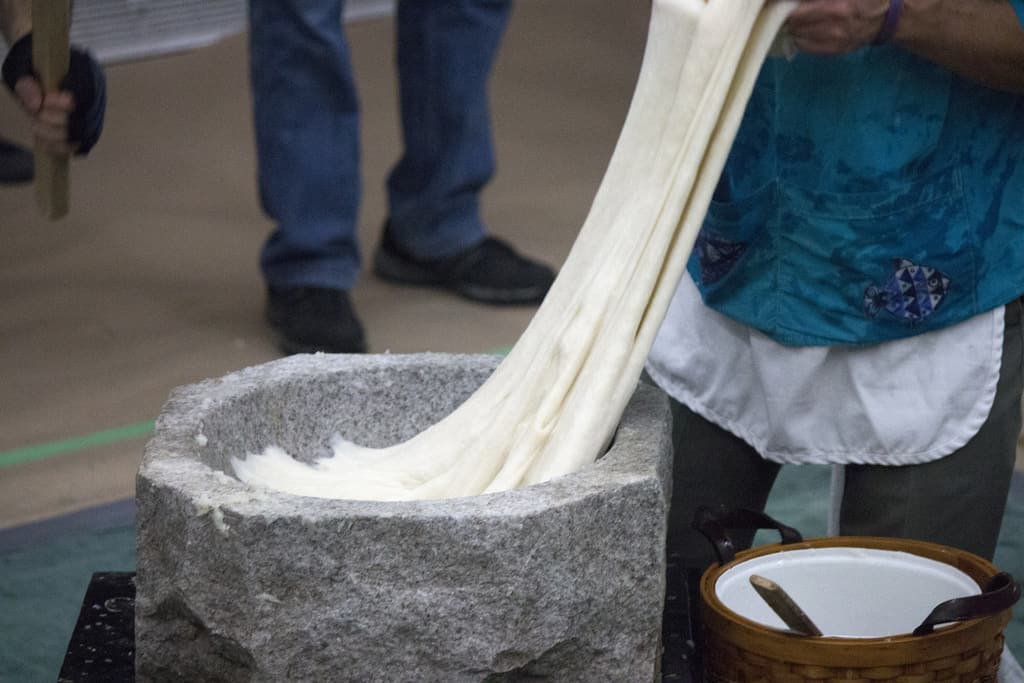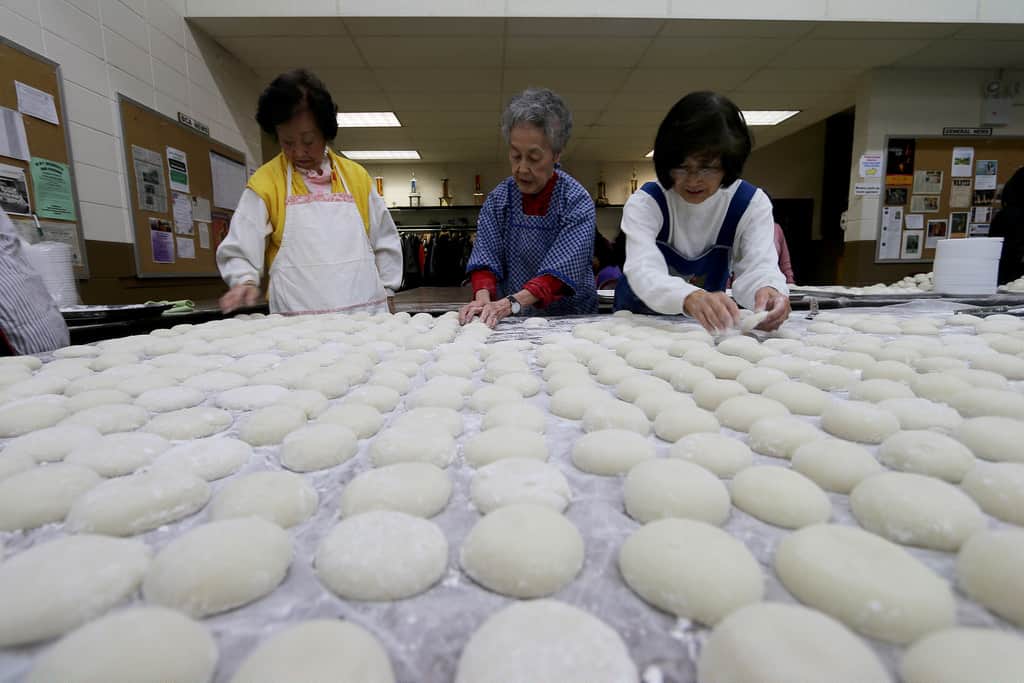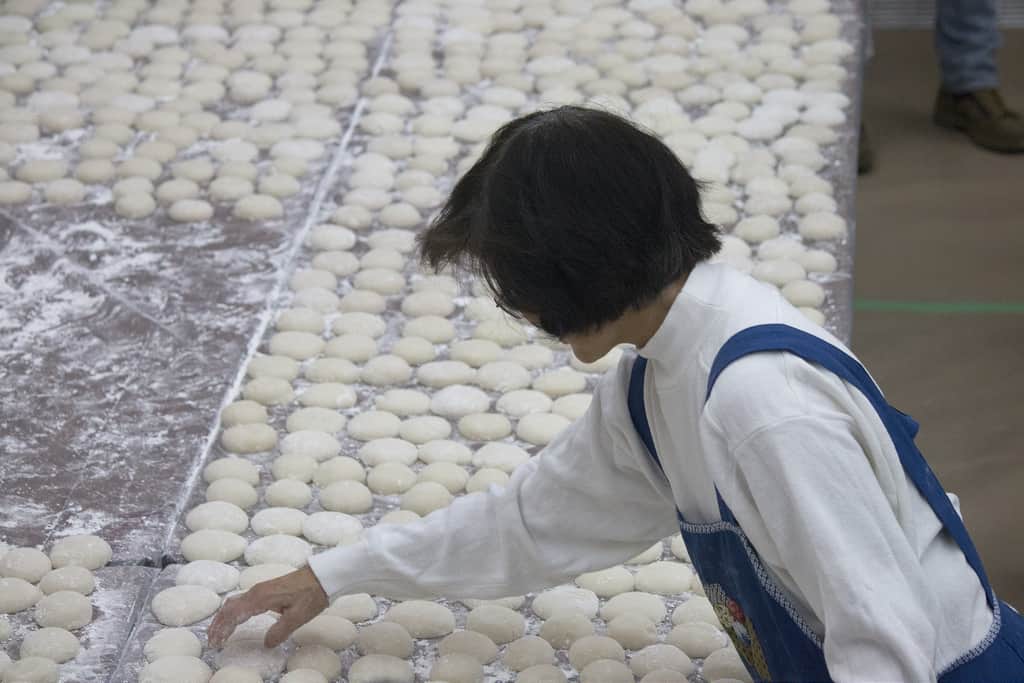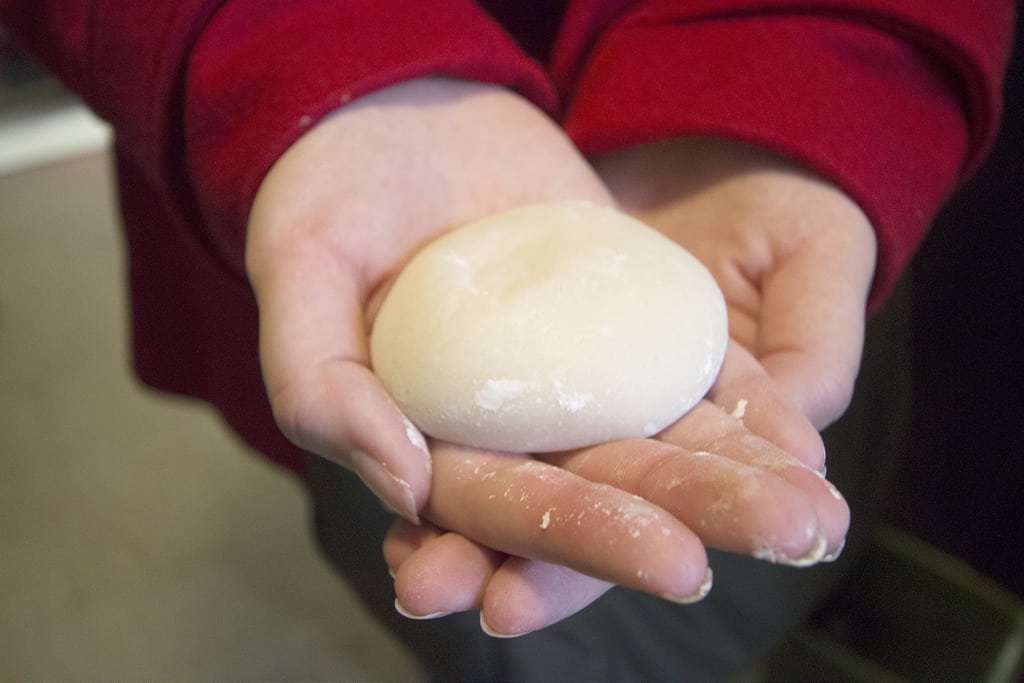#Findingasia
#FINDINGASIA: MOCHITSUKI AT THE MIDWEST BUDDHIST TEMPLE, CHICAGO
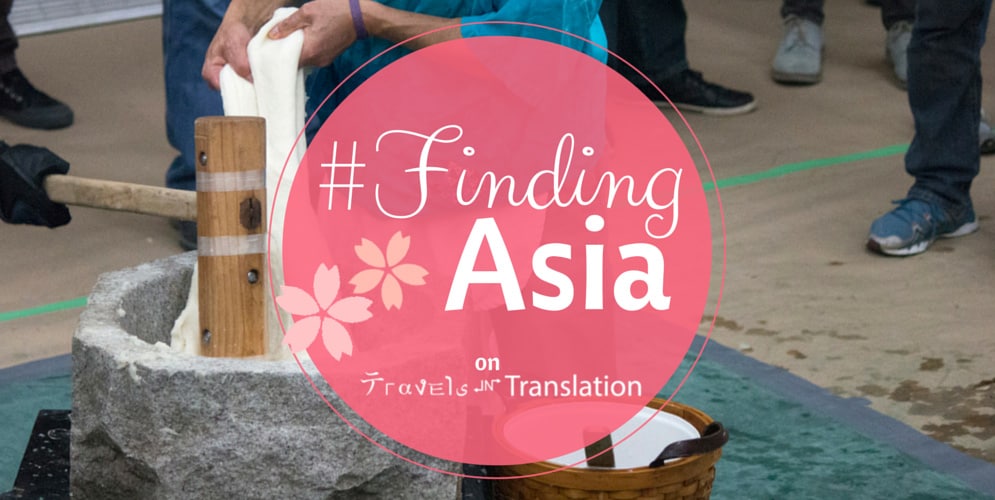
Mochi (餅), which is a sweet sticky rice cake, has been eaten in Japan since ancient times for special celebrations and festivals.
The practice of hand-pounding mochi, known as mochitsuki (餅つき), is now rare even in Japan as most people would rather buy machine-made mochi sold at stores instead of making their own.
Yet still, whether store-bought or home-made, the tradition of eating mochi on New Year’s remains deep rooted in their culture.
Since it is a bit of a dying art, you can imagine my excitement when I learned that the Midwest Buddhist Temple holds their own traditional mochitsuki festival each December right here in Chicago.
I never even got to experience this when I lived in Japan, so of course I went out and spent the day learning all about this traditional practice!
To make mochi by hand is a considerable amount of work. First, sweet rice is soaked in water overnight. It’s then steamed and placed in an usu (碓; a large, stone mortar) where it gets pounded over and over with kine (杵), or wooden mallets.
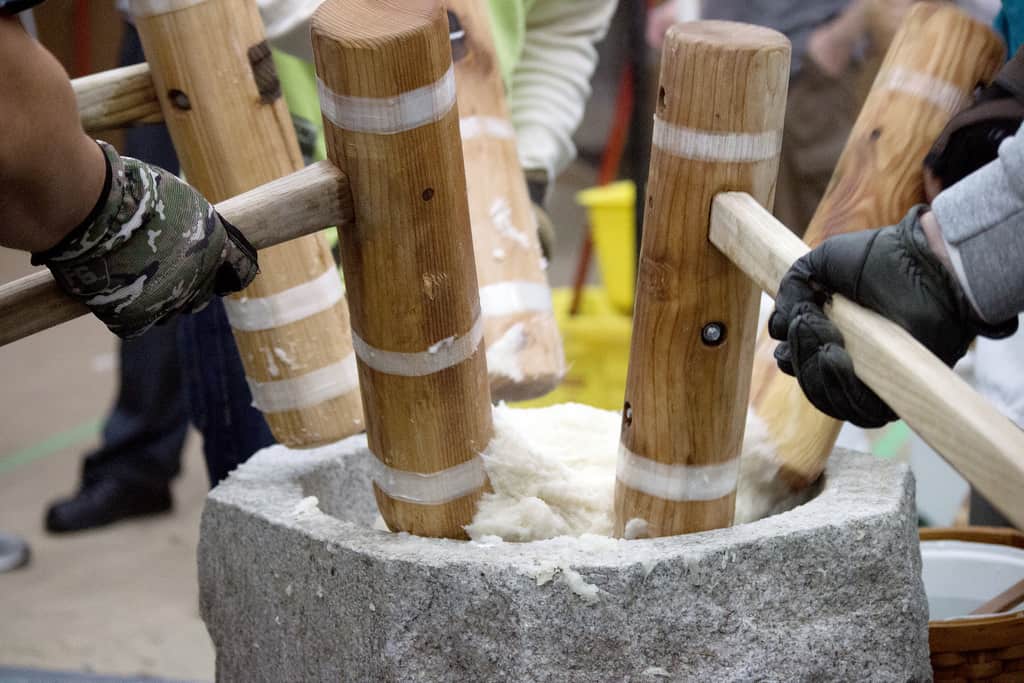

The main characteristic of mochi, its stickiness, comes from constantly turning the mochi while it’s being pound in order to pound all sides equally.
A kaeshi-te is the person appointed with the dangerous task of turning over and pulling the mochi while it’s being pounded by the group of tsuki-te. The kaeshi-te continually wets his hands in order to avoid sticking to the mochi– which would in turn result in getting his hand smashed by the mallet. He is also the one guiding the tsuki-te and telling them where the need to hit next.
It’s very much an art skill.
The rice has to be pounded with considerable force in order to make the mochi smooth and consistent. This means the synchronization between the tsuki-te is very important and you’ll often hear them grunting or yelling out in order to keep synchronized, kind of like they do when making sake.
Once the mochi is completely soft and homogenous, it is then formed into various shaped and sized cakes. It can be enjoyed plain, with different sauces or with sweet fillings inside like red bean.
And New Year tradition doesn’t just stop at eating mochi. A special variation, called kagami-mochi (鏡餅; mirror mochi) is typically placed on the family alter during the New Year as well as an offering for Shinto deities. This auspicious gesture signifies hope for a happy year ahead and good fortune!
Now that’s one delicious Japanese cultural tradition that I can get behind! Yum!
When to visit: December
Where to visit: 435 West Menomonee Street, Chicago, IL 60614
How to visit: El stop Sedgwick on the Brown Line

